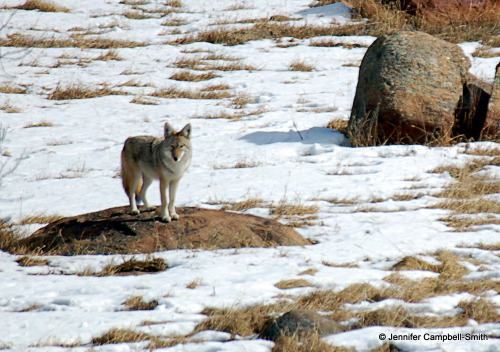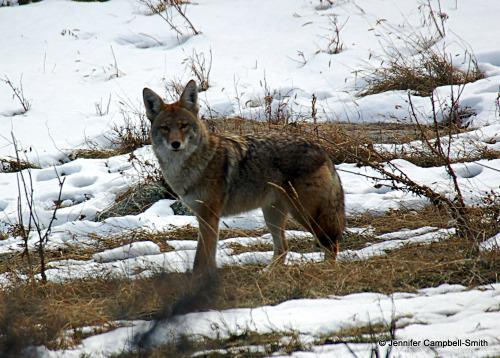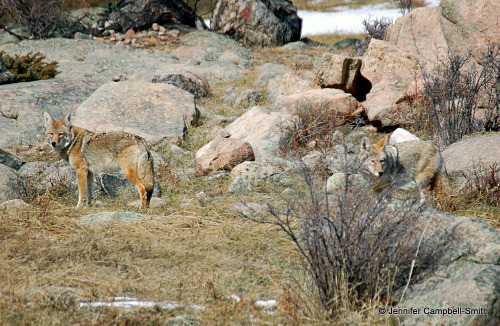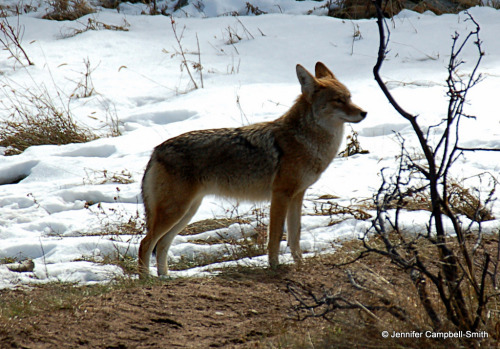I’ll be the first to admit these aren’t fantastic photos, but I still like them.
I’ll be the first to admit these aren’t fantastic photos, but I still like them. These were a few coyotes we pushed off of a mountain lion kill in Rocky Mountain National Park in 2006. We needed to set up some camera traps on an elk kill in order to get some photos of one of our collared female lions. These two coyotes, along with a bunch of magpies, were enjoying the easy meal while the lions napped during the day. I say lions (plural) because the camera traps revealed 4-5 lions all feeding on the same kill! We were really surprised. It was likely two females and their cubs. The density of elk in RMNP is so high that, if I had to guess, sharing a kill was probably no big deal and not worth fighting over. Having mountain lions kill elk in the first place is not common. They more typically kill smaller cervids like white-tailed and mule deer, but in and around RMNP, elk is commonly on the menu. Like I mentioned before, the elk density is absurdly high in RMNP, so it makes sense that the lions would take larger prey more often. They aren’t just taking down calves and cows, there were several bull elk kills (I have the skull from one). (Though note that mountain lions do take elk in other parts of the US, such as Idaho, and they are occasionally known to take down wild horses and even moose.) What’s most impressive about these cats taking down elk is that they do it all by themselves. That said, I never felt threatened going in on kills to set up cameras or take samples. We were smart about our movements (ex. not bending over to expose a bare back), worked in pairs, and only went to kills during the daytime. The coyotes that we pushed off this kill were also not threatening. They were relaxed and patient, wary, but curious. They just waited for us to leave so they could get back to their meal. -- source link
Tumblr Blog : jenntalksnature-blog.tumblr.com
#coyote#canis latrans#mountain lion#puma concolor#cougar#panther#magpie#pica hudsoni#cervid#cervus canadensis





